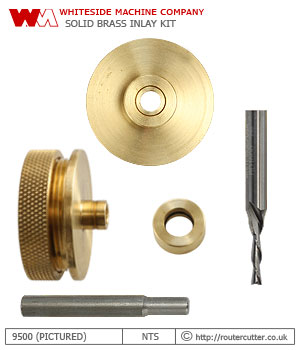I'm looking to improve my current inlay technique of.... cut out the shape, mark the shape on target, sneak up to the marking line with router, fill in all the (many many!) gaps with sawdust+glue before sanding it and doing a lot of swearing.
It's ok, but suspect there's huge room for improvement. Gotta be a better way!
Research on youtube has led me to these router inlay kit things, this one seems to come up a lot >>

Has anyone had any joy with these kits? I can see how they'd work with relatively smooth shapes but can't see how it would much use with anything with pointy edges.
How do you chaps do your inlays?
It's ok, but suspect there's huge room for improvement. Gotta be a better way!
Research on youtube has led me to these router inlay kit things, this one seems to come up a lot >>

Has anyone had any joy with these kits? I can see how they'd work with relatively smooth shapes but can't see how it would much use with anything with pointy edges.
How do you chaps do your inlays?










